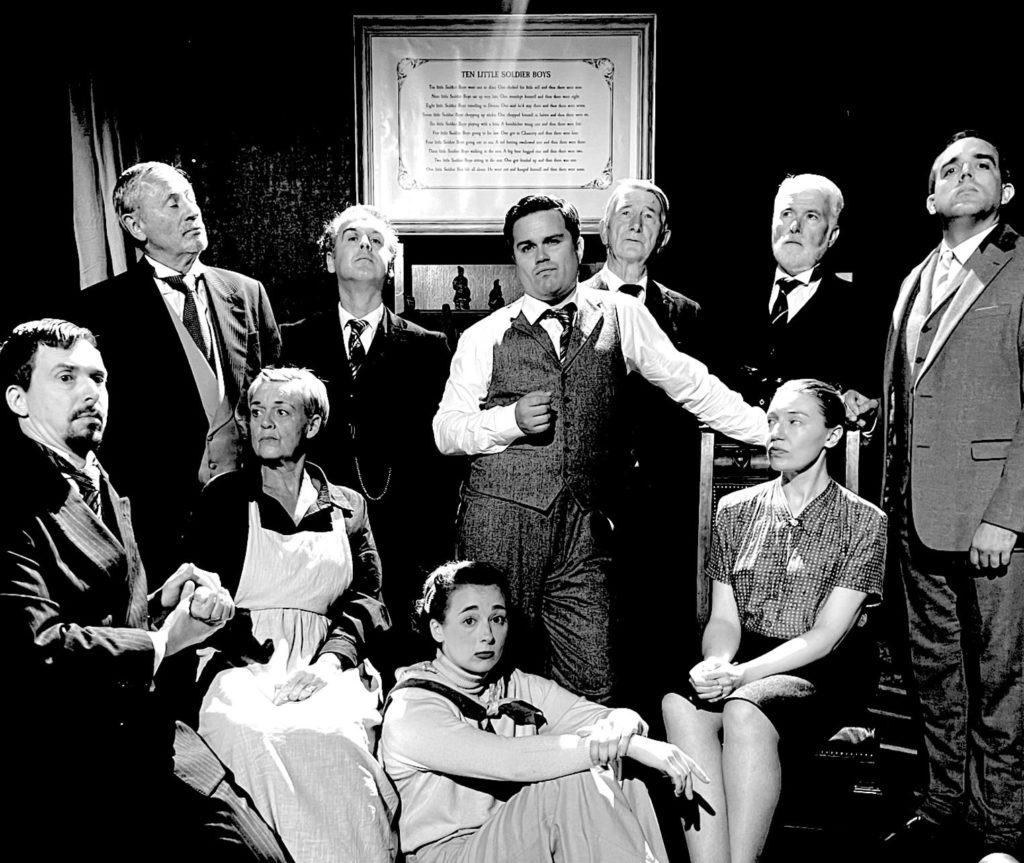
NOT to be mistaken for Lucy Bailey’s “21st century reinvention” of Agatha Christie’s best-selling crime novel, bound for the Grand Opera House in November, this is the first of three Pick Me Up productions, made in York, one per month, this autumn.
For the record, Pick Me Up producer Robert Readman secured the rights for staging And Then There Were None before the Fiery Angel, ROYO and Royal & Derngate co-production emerged over the horizon.
He had put in place an autumn season to show off all the talents at Pick Me Up’s disposal: experienced hands for the “straight play”, Christie’s posh house party thriller; blossoming youths in The Worst Witch in late-October, and musical comedy exponents in Mel Brooks’s Young Frankenstein the following week.
Readman is a Christie aficionado – he could pick her as his specialist subject for Mastermind – but decided to spread the directorial workload for the season ahead, having already cast And Then There Were None before the handing the reins to cast member Andrew Isherwood to steer a film noir-style nail biter.

Readman will direct Young Frankenstein, preceded by Rosy Rowley overseeing The Worst Witch, but his creativity is at play in And Then There Were None too in his design for a Christie murder mystery set in 1939 with Europe on the brink of war.
Christie had talked of a bleak house that should feel like it had long been empty, furnished but stark and unwelcoming. Readman, with his collector’s eye for acquiring props, furniture, costumes and more besides at his Chicken Sheds warehouse in Bubwith, delivers the period look to the T.
Furniture from a friend’s house move, tick. A redundant fireplace from another friend’s refurb, tick. The glass-framed doors from York Theatre Royal’s production of Private Lives, tick. The ten little soldier boy models, from Readman’s research, tick. An Ercol chair from the Readman family stock, tick.
He assembles them on an end-on/side on set that dominates the Theatre@41 black box, deliberately so to give Isherwood’s production an oppressive, claustrophobic air. There will be no escape from Soldier Island, off the Devon Coast, for the eight house guests, butler and his housekeeper wife, assembled there at the intriguing invitation of a certain Mr and Mrs U N Owen (whose identity and whereabouts shall indeed remain unknown).

One by one, they are introduced to the audience, first the husband-and-wife staff Rogers and Mrs Rogers, played by husband-and-wife Martyn and Jeanette Hunter, Martyn delightfully understated, Jeanette gone, spoiler alert, all too soon.
Not before Rogers follows instructions to play a sternly delivered recording that declares all of them to have a wicked past and a secret destined to seal their fate, each being marked for murder.
As the weather turns thunderous, cutting the island rock off from the mainland, let the bloodbath begin, the toy soldiers disappearing one by one with each murder, in accordance with the lines of a sinister nursery rhyme on display above the mantelpiece.
Andrew Roberts has a cameo, West Country accent and all as Fred Narracott, delivering the guests to the island, before re-emerging as spiffing, fast-living, flippant Anthony Marston. Florence Poskitt’s outwardly level-headed but on-edge Vera Claythorne is welcoming guests on the Owens’ behalf; Mike Hickman’s devil-may-care Captain Philip Lombard likes to be seen keeping spirits up and his spirit intake up even higher.

Andrew Isherwood soon sheds the dodgy accent of his cover as a wealthy South African, Davis, to be revealed as retired Detective William Henry Blore.
Ian Giles’s old boy, General MacKenzie, appears to be losing his marbles; Jessica Murray’s disapproving religious zealot Emily Brent knits feverishly, and Mark Simmonds’ Dr Armstrong is as earnest as brown bread.
Rory Mulvihill’s Sir Lawrence Wargrave is wont to dominate, a judge by profession, with a permanent black-cap countenance and a voice that commands the stage and those around him alike.
Isherwood’s direction skilfully steers a path through dark humour, heightened tensions and chilling revelations, capturing Christie’s scathing dismissal of so many restrictive institutions, and his cast applies both light and increasing shade.

Hickman’s mysterious Lombard is particularly good at keeping up a front; Poskitt may be associated with wide-eyed, squishy faced comedy but here delves into disturbing inner turmoil, a revelation that affirms she should not be pigeonholed.
Mulvihill, latterly flourishing in diverse roles beyond his musical theatre leading-man prowess, is in terrific form once more, his grave Wargrave judging everyone to damnation.
Will Nicholson and Adam Coggin’s lighting blends in just right with each scene’s tone and Readman’s scenery in Isherwood’s engrossing production that benefits from one other Readman decision: replacing the play’s happier ending with the novel’s original darker denouement, with permission from the Christie estate. Right again, Robert.
Performances: 7.30pm nightly, plus 2.30pm Saturday matinee. Box office: tickets.41monkgate.co.uk.

